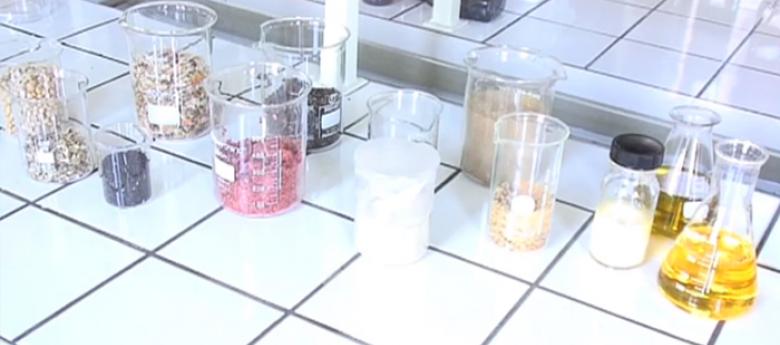The Biomolecular Engineering Laboratory carries out research in converting agro-resources for food and non-food purposes. The research project entitled “Biomolecular Engineering: multi-scale structuring, functionalization and modelling” focuses on the assemblage, the structuring and the vectorization of biomolecules in order to obtain new molecular architectures to be used in food processing, nutraceutics, pharmaceutics and cosmetics.
LiBio is 9001 ISO certified in the Physico-Chemical and Microbiological sectors.
The laboratory is composed of a team of 21 teacher-researchers, 12 technical assistants, and about 15 doctoral researchers, working in three lines of research:
- 1: Creation of new molecular architectures
Different projects target finding the methods and information necessary for the rational design of new molecular structures and then creating them by controlled processing methods. In the general view of reverse engineering, structure-property correlations are studied to establish the scientific basis that allows for predicting the molecular structures that are the most suitable for the desired functions. The methods for obtaining these structures are developed and optimized using genetic and enzymatic tools. - 2: Structure – Assembly – Vectoring biomolecules
It is necessary to optimize the stability and the bioavailability of the biomolecules included in the formulated matrix (macro and nano-microstructures). Understanding the process for structuring and auto-assembling and the molecular mechanisms of the biomolecule-vector interactions will allow for controlling the stabilization of the molecular architectures formed and the kinetic liberation of biomolecules, within the defined environmental conditions. - 3: Multi-scale Modelling
Numerous laboratory experiments at LIBio are run in parallel with modelling systems and processes at different levels. At the molecular level, the objective is to get a better understanding of the complex systems under study, whether they involve enzymes and their substrates, as in processes for biomolecular bioconversion, or molecular architectures produced in the laboratory. The models derived from molecular modelling simulations can serve as guides for the rational design of new molecules with targeted properties. At a macroscopic level, the mathematical models integrating thermodynamic and kinetic laws describe the process for transforming biomolecules. The information gathered at different levels can be beneficial in optimizing molecular structures and the processes used to obtain them.
Equipment:
- Tools for studying structure and interactions
- Chromatography tools
- Tools for studying rheological properties
- Microbiology and Molecular Biology tools
- A sensory analysis room
- A platform for modelling – simulation
- A platform for parallel syntheses
- Laboratoire Commun d'Analyse de l'IFR110 (PASM), a joint technical services laboratory in the genomics field
LIBio is involved in:
- L’IFR 110 EFABA (Forest Ecosystems, Agroresources, Bioprocesses and Food)
- Competency center FABELOR (GIS Forest, Food Industry, Biology, Environment LORrraine)

